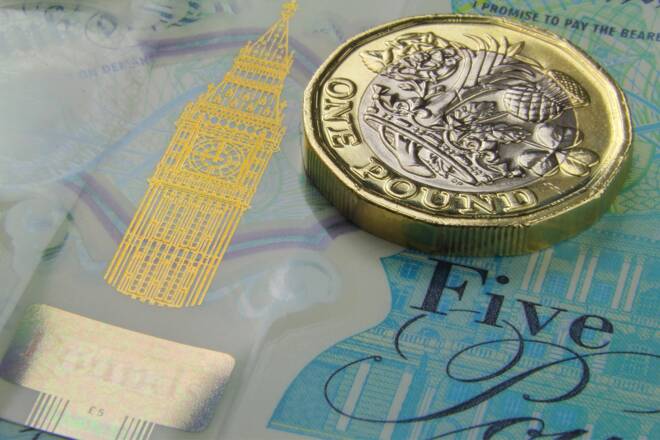Advertisement
Advertisement
GBP to USD Forecast: Sterling on Shaky Ground as Recession Looms
By:
The GBP/USD pair experiences a continual decline, reflecting a possibly prolonged UK recession and a dovish stance from the Bank of England on Sterling.
Highlights
- GBP/USD hits a low, showing a 0.19% decline, extending to a six-session losing streak.
- The BoE could expedite a potential first-rate cut to Q2 due to a worsening macroeconomic environment.
- An unexpected fall in US jobless claims will likely fuel speculations on a December Fed rate hike.
Overview of the Wednesday Session
On Wednesday, the GBP/USD pair fell by 0.19%. Following a 0.44% decline on Tuesday, the GBP/USD pair ended the session at $1.21345. A relatively range-bound session saw the GBP/USD strike a high of $1.21641 before falling to a Wednesday low of $1.21102.
The GBP/USD and the Broken Record
On Wednesday, the GBP/USD pair extended its losing streak to six sessions. A lack of Bank of England commentary and UK economic indicators left the dovish BoE monetary policy decision to resonate.
The BoE will likely join the ECB in leaving monetary policy unchanged over the near term. Aligned with the Euro area economy, the expectation of a prolonged UK recession is gathering momentum.
The markets are betting on the BoE holding interest rates at 5.25% until July 2024. According to a Reuters poll, 16 economists predict UK interest rates to fall to 5.00% in the third quarter. Ten economists predict an interest rate of 4.75%, with six signaling 4.50%.
A deteriorating macroeconomic environment could accelerate the timing of a first-rate cut to the second quarter. Inflation must soften sufficiently to allow the BoE to justify an early rate cut.
On Friday, the traditionally influential quarterly UK GDP report needs consideration. The GBP/USD may see another stumble if there are downward revisions to the prelim numbers.
The recent UK services PMI highlighted a worsening macroeconomic environment through the third quarter. A contraction across the UK services sector supports the gloomy outlook for the UK economy and the Pound. The UK services sector accounts for over 75% of UK GDP and 80% of UK jobs. Service sector-related data have a considerable influence on monetary policy.
US Jobless Claims to Take Center Stage
US jobless claims will garner investor interest later today. Another unexpected fall in jobless claims will likely fuel bets on a December Fed rate hike.
Economists forecast US initial jobless claims to increase from 201k to 215k.
Tight labor market conditions support wage growth. A pickup in wage growth fuels consumer spending and demand-driven inflationary pressures. Higher interest rates raise borrowing costs, impacting disposable incomes. A pullback in disposable income and labor market uncertainty would curb spending and ease demand-driven inflation.
Short-Term Forecast
The GBP/USD pair remains on the ropes, with the US dollar in the position to send the GBP/USD pair to sub-$1.20. Steady US jobless claims, sticky inflation, and consumption would send the GBP/USD deeper into the abyss.
GBP to USD Price Action
Daily Chart
The GBP/USD pair remained below the 50-day and 200-day EMAs, affirming bearish price signals. A GBP/USD fall below $1.21000 would support a move toward the $1.19055 support level.
An unexpected fall in the US jobless claims and hawkish Fed comments would bring sub-$1.21 into play.
However, a break above the $1.22150 resistance level will likely bring the $1.23 handle into view. The GBP/USD pair is unlikely to test the $1.24410 resistance level.
The 14-period daily RSI reading of 19.28 indicates the GBP/USD pair in the oversold territory.
4-Hourly Chart
The GBP/USD hovers below the 50-day and 200-day EMAs, reaffirming bearish price signals. A fall below $1.21000 would support a move toward the $1.19055 support level.
A break above the $1.22150 resistance level gives the bulls a run at the 50-day EMA.
With a 27.10 reading on the 14-period 4-hourly RSI, the GBP/USD remains within the oversold territory.
About the Author
Bob Masonauthor
With over 28 years of experience in the financial industry, Bob has worked with various global rating agencies and multinational banks. Currently he is covering currencies, commodities, alternative asset classes and global equities, focusing mostly on European and Asian markets.
Advertisement
